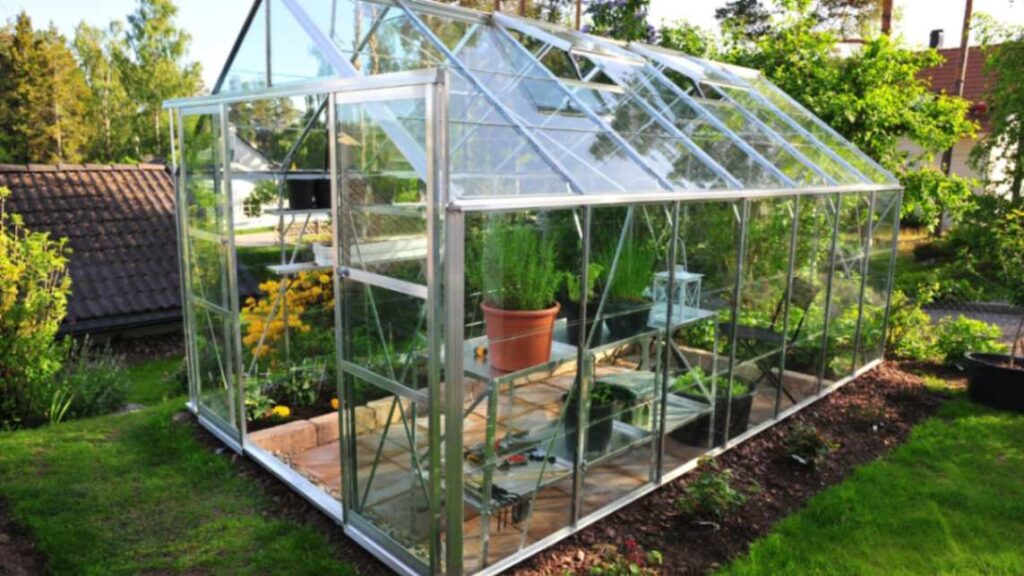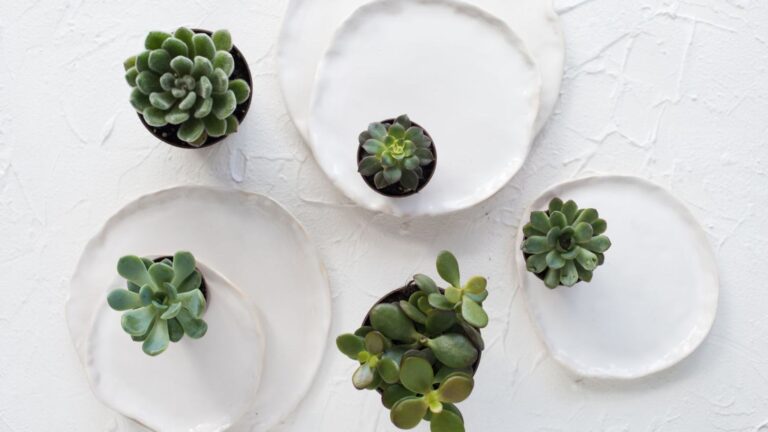Build Your Own DIY Greenhouse Easily
Gardening enthusiasts and eco-conscious individuals alike are increasingly drawn to the idea of building their own DIY greenhouse. This project not only offers the joy of cultivating a personal garden but also aligns with sustainable living practices. A greenhouse lets you extend the growing season. You can experiment with diverse plant species and ensure a year-round supply of fresh, organic produce from your backyard. In addition to the practical benefits, creating a greenhouse can be very satisfying. It provides a hands-on way to help the environment.
Whether you’re a seasoned gardener or a beginner with a green thumb, constructing a greenhouse is a feasible and rewarding. In this article, we will guide you through the benefits, planning, and building of your own greenhouse. We will help you turn your gardening dreams into reality. And all while embracing a more eco-friendly lifestyle.

Benefits of a DIY Greenhouse
Creating a greenhouse in your backyard isn’t just a fulfilling project; it offers many benefits that extend well beyond the garden.
Extended Growing Season
One of the primary advantages of a DIY greenhouse is the ability to extend the growing season. The controlled environment protects plants from extreme weather. It allows earlier planting in the spring and growth into the fall and winter.
Variety and Quality of Produce
With a greenhouse, you have the flexibility to grow a wider variety of plants, including exotic or off-season crops. This control over the growing environment leads to healthier plants. They are more robust and give you high-quality, organic produce.
Environmental Impact
Building a greenhouse yourself allows you to use recycled materials and sustainable practices. It also cuts the carbon footprint of moving food and encourages self-sufficiency.
Educational Opportunity
For families, a DIY greenhouse can be an educational tool. It teaches kids about biology, ecology, and the importance of caring for the environment. It’s a hands-on way to connect with nature and understand the cycle of plant life.
A DIY greenhouse enriches your gardening, helps your well-being, and protects the environment. It’s a step towards a more sustainable and self-reliant way of life.
Planning Your DIY Greenhouse
A successful greenhouse project starts with careful planning. Here are key things to ensure your greenhouse meets your gardening needs. They should also meet your environmental goals.
Selecting the Right Location
- Sunlight: Choose a place that gets ample sunlight. It’s best if it faces south in the Northern Hemisphere. That gives it the most light.
- Protection: Ensure the site is sheltered from strong winds and not shaded by trees or buildings, which can impede sunlight.
Deciding on Size and Design
- Space Requirements: Consider the amount of space available in your yard and the types of plants you want to grow. This will determine the size of your greenhouse.
- Design Preferences: Decide on the design based on your skill level and budget. Options range from simple hoop houses to more elaborate structures.
Materials and Sustainability
- Frame Materials: Common materials for frames include wood, PVC pipes, or metal. Consider durability and environmental impact in your choice.
- Covering Options: Coverings can be made from glass, polycarbonate, or plastic sheeting. Each has different insulating properties and longevity.
Ventilation and Insulation
- Ventilation: Plan for adequate ventilation to control temperature and humidity. This can be through manual or automatic venting systems.
- Insulation: Proper insulation is key for heat retention, especially in colder climates. Consider insulating materials and double-glazing for glass panels.
Careful planning is key. You must plan the location, size, design, and materials well. This is vital for making a greenhouse that is efficient and eco-friendly. It must also align with your gardening and sustainability goals.
Step-by-Step Construction Guide
Building a greenhouse can be a rewarding project. Here’s a simplified guide to help you construct your own greenhouse.
Laying the Foundation
- Choose the Foundation: Start with a solid foundation. Options include concrete, pavers, or treated wood, depending on your budget and the size of the greenhouse.
- Level the Ground: Make sure it is level before building the foundation. This stability is key for your greenhouse.
Constructing the Frame
- Frame Assembly: Assemble the frame according to your chosen design. This could involve constructing arches for a hoop house or erecting wooden or metal frames for a more traditional structure.
- Securing the Frame: Ensure the frame is securely anchored to the foundation to withstand weather conditions.
Adding Covering and Doors
- Install the Covering: Attach your chosen covering material to the frame. If using plastic sheeting, ensure it’s taut and secure to prevent damage from wind.
- Door Installation: Install a door that allows easy access and additional ventilation.
Ventilation and Shading
- Ventilation Windows: Use ventilation windows or openings that can be opened or closed as needed.
- Shading Solutions: In very sunny climates, consider adding shading cloths to prevent overheating.
Internal Setup
- Arranging Planting Spaces: Set up planting tables or shelves according to the layout that best suits your planting needs.
- Irrigation System: If needed, install an irrigation system for efficient watering.
While building a greenhouse requires effort and planning, the process can be immensely satisfying. It’s a hands-on way to create a personalized space for your plants and contribute to sustainable living.

Maintaining Your Greenhouse
Once your greenhouse is up and running, proper maintenance is key to its longevity and the success of your plants.
Temperature and Humidity Control
- Monitoring Tools: Use thermometers and hygrometers. They monitor the greenhouse’s temperature and humidity.
- Ventilation: Use vents, windows, or fans for it. They regulate temperature and air, especially in warmer months.
Plant Management
- Regular Watering: Establish a consistent watering schedule to ensure plants receive adequate moisture.
- Pest and Disease Control: Be vigilant about pests and diseases. Use natural or eco-friendly methods for control and prevention.
Seasonal Adjustments
- Adapting to Seasons: Adjust your greenhouse practices to changing seasons. This might include changing the shading during summer or adding extra insulation in winter.
- Crop Rotation: Practice crop rotation to maintain soil health and reduce pest buildup.
Cleaning and Repairs
- Regular Cleaning: Keep the greenhouse clean. Wash the coverings and disinfect surfaces often.
- Inspect and Repair: Regularly inspect the structure for any damage and make necessary repairs to ensure the greenhouse remains safe and functional.
Maintaining a greenhouse takes attention and care. But, the rewards of a flourishing green space and the joy of gardening are well worth the effort.
Upcycling and Using Recycled Materials
Using recycled materials in your greenhouse cuts costs. It also fits with eco-friendly principles. Here’s how you can upcycle materials creatively.
Finding Recycled Materials
- Local Resources: Check local construction sites, recycling centers, or online marketplaces for materials that can be repurposed.
- Community Networks: Engage with community groups or online forums where people might be giving away materials suitable for greenhouse construction.
Creative Upcycling Ideas
- Old Windows and Doors: Use old windows and doors for the walls and roof of your greenhouse. They’re great for letting in light and can be easily repurposed.
- Plastic Bottles: Plastic bottles can be used to create a greenhouse covering. They’re lightweight, allow light penetration, and provide good insulation.
Eco-Friendly Considerations
- Sustainability: Choose materials that are durable and eco-friendly. Ensure that the materials you repurpose are suitable for long-term use in a greenhouse environment.
- Safety: Make sure that the materials you use, especially repurposed ones, are safe and free from harmful chemicals.
Using recycled materials in your DIY greenhouse project is not only cost-effective but also contributes to waste reduction. It’s a testament to the ethos of sustainability and resourcefulness in eco-friendly living.
To Wrap it Up
Building and keeping a DIY greenhouse is a fulfilling journey. It is not just gardening. It’s a commitment to eco-friendly living. It’s an opportunity to connect with nature. And it’s a path to self-sufficiency in food. You get to plan, build, and care for your greenhouse. It allows for creativity and the joy of building with your own hands.
Also, using recycled materials in your DIY greenhouse project reinforces the principles of sustainability and environmental responsibility. It’s a practical demonstration. We can reuse and repurpose. This reduces our ecological footprint. It also creates something valuable and beautiful.
Whether you’re a seasoned gardener or a novice, a greenhouse offers a rewarding way to enhance your gardening experience. It’s about taking control of your food, enjoying the tranquility of a green space, and contributing to the environment. So embrace the challenge, enjoy the process, and revel in the rewards of your very own DIY greenhouse.



